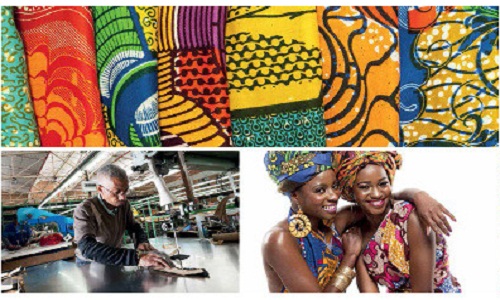"In an effort to fulfil its High 5 mandate The African Development Bank (AfDB) has launched ‘Fashionomics’ the economy of fashion initiative during the Bank’s 2015 Annual Meeting to boost micro, small and medium-sized businesses (MSMEs) in the fashion and textile industry in Africa. The continent’s history of fashion and textile has a legacy of its own. From Aso Oke & Adire in Nigeria, Kente in Ghana, Shweshwe in South Africa, Kitenge in Kenya, Africa’s history of fashion and textile reflects the country’s ingenuity and creativity."

In an effort to fulfil its High 5 mandate The African Development Bank (AfDB) has launched ‘Fashionomics’ the economy of fashion initiative during the Bank’s 2015 Annual Meeting to boost micro, small and medium-sized businesses (MSMEs) in the fashion and textile industry in Africa. The continent’s history of fashion and textile has a legacy of its own. From Aso Oke & Adire in Nigeria, Kente in Ghana, Shweshwe in South Africa, Kitenge in Kenya, Africa’s history of fashion and textile reflects the country’s ingenuity and creativity. Africa currently accounts for 1.9 percent of the total estimated $1.3 trillion global trade. Africa’s entire textile/clothing market is already worth more than $31 billion and accounts for the second largest number of jobs in developing countries, after agriculture. In the next five years, the industry could generate $15.5 billion revenue.
Fashionomics to create a unique networking platform
The Fashionomics initiative will start off with creating a Business to Business (B2B) online platform by the first quarter of 2017. The dedicated website will be designed as a networking platform for all the links in the fashion and textile value chain- suppliers, brokers, designers, distributors and investors. It also acts as a place to share knowledge, tutorials and opportunities in the textile and fashion sector. The bilingual portal’s objective is to help members of the industry develop and boost their businesses. The Fashionomics Initiative will start off with Ethiopia and Cote d’Ivoire the two countries show the disparities and unique characteristics typical of the entire continent.
Initiatives to boost investment, employment
Africa’s fashion industry has already witnessed great growth and investments with AfDB’s initiatives. In Madagascar, AfDB is initiating an Investing Promotion Support Project (PAPI), investing about $10 million to boost the textile industry through the project. The Textile Sector Promotion Support Fund (FAPST) has been created under PAPI to support and improve the capacities of MSMEs within the textile sector. PAPI will also initiate the establishment of a Textile Special Economic Zone (SEZ). The fashion industry in Africa employs a large percentage of women. In Ethiopia, 78 percent of workers in the textile and apparel industry are women. Women own 80% of businesses in Cote d’Ivoire’s textile industry. Fashionomics will play a crucial role in creating the employment and empowerment opportunities for women. According to AfDB’s report, the clothing textile industry could generate 400,000 jobs in Sub-Saharan Africa and exports could double in the next 10 years.
In 2013, H&M, Swedish clothing retailer started sourcing for Ethiopian garment producers and the company has set up offices in Addis Ababa to get closer to suppliers. About 60,000 jobs have been created since H&M began chain operations in the country.
Challenges on the way
However, Fashionomics has a few challenges on the way. Africa has the lowest e-commerce penetration rate. In 2013, Africa and the Middle East accounted for only 2.2 percent of global business-to-business e-commerce. Textile production facilities are missing in most of the countries as they need more investment than apparel/clothing facilities. The huge capital requirement was one of the factors that led to the downfall of the textile industry in Nigeria. There is also constrained access to financing for entrepreneurs and SMEs as the cost of establishing a fashion business since electricity bills, labour costs, and taxes are high in Africa. Moreover, the cost of intra-African trade is relatively high as well. According to the World Bank, intra-African trade costs 50 per cent more in Africa than in East Asia. Also, Africa’s intra-regional trade costs are the highest of any developing region.
Regardless of these challenges, the regional governments need to foster the development of local suppliers, entrepreneurs, and regional value chains, ensure access to low-cost financing, build a more conducive business climate, buy from locally owned companies, invest in infrastructure and establish more educational institutions. Textile and apparel suppliers also need to improve productivity by investing in new equipment and training, upgrade and diversify product portfolio, and establish long-term partnerships with buyers thereby increasing their customer base. Along the way global recognition and strategic investments need to flow in the continent.













